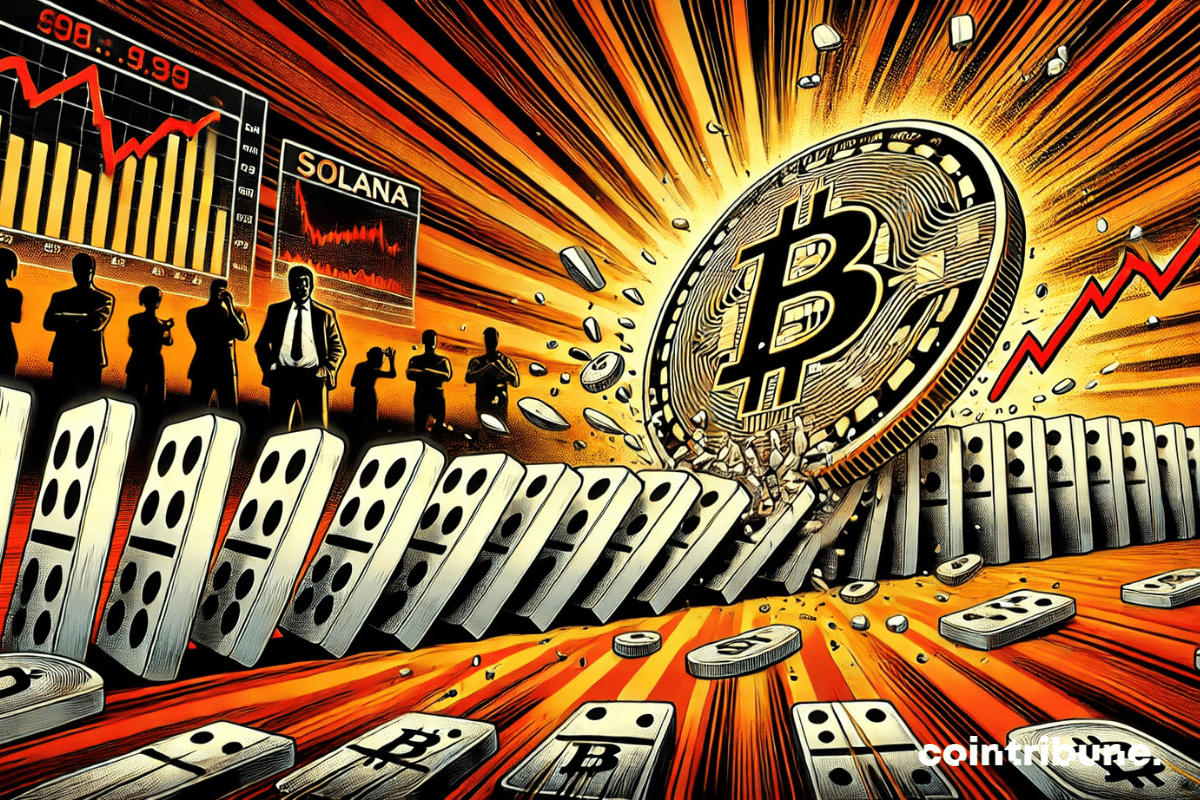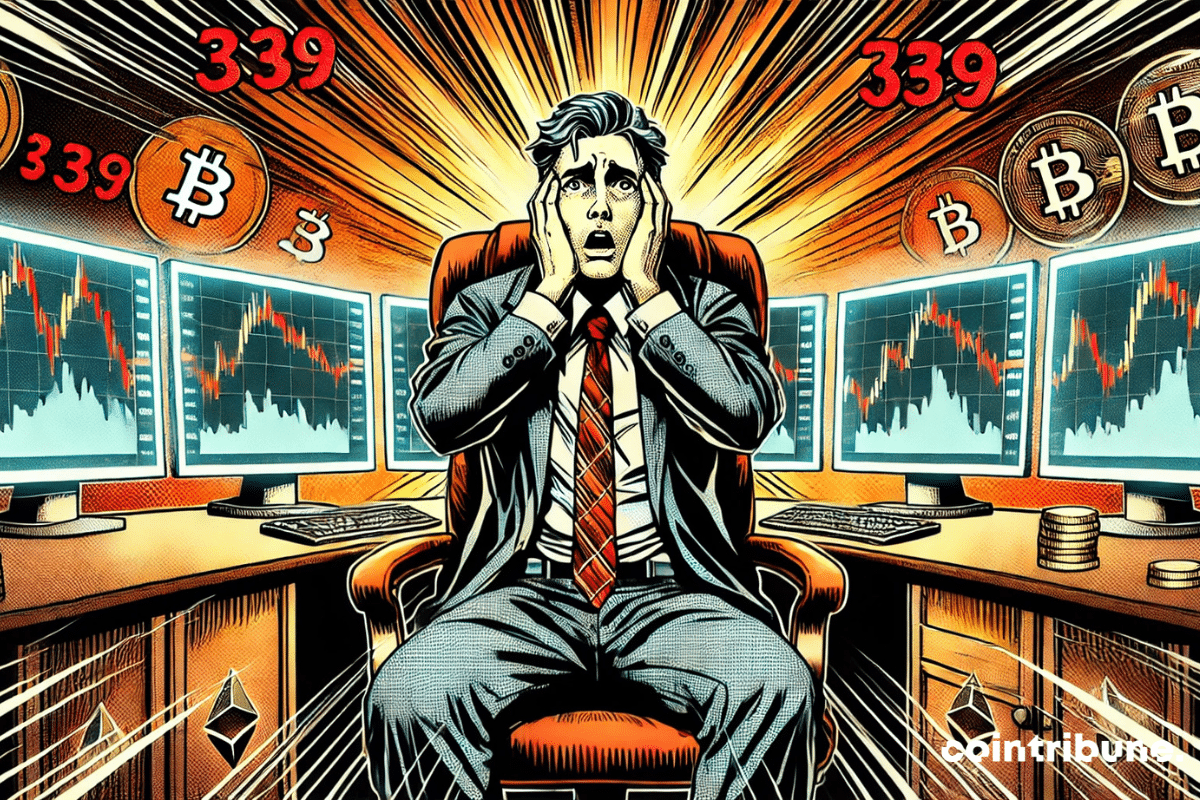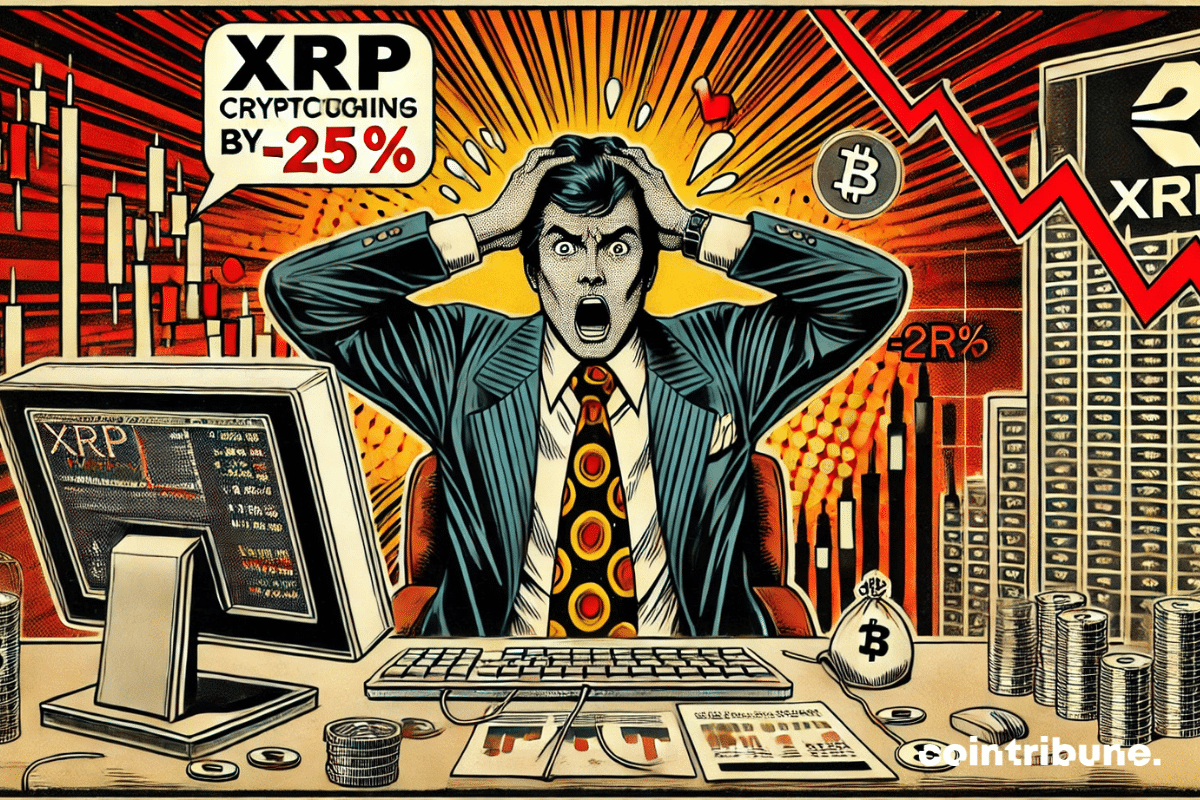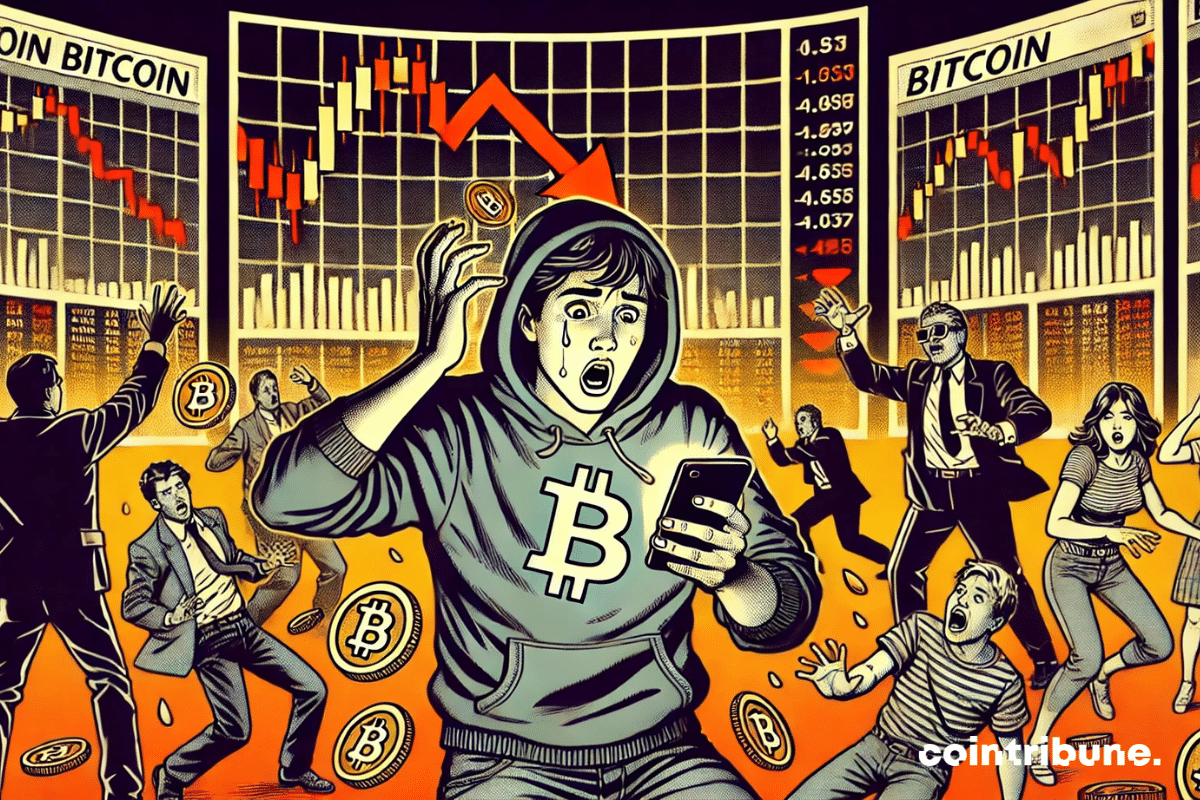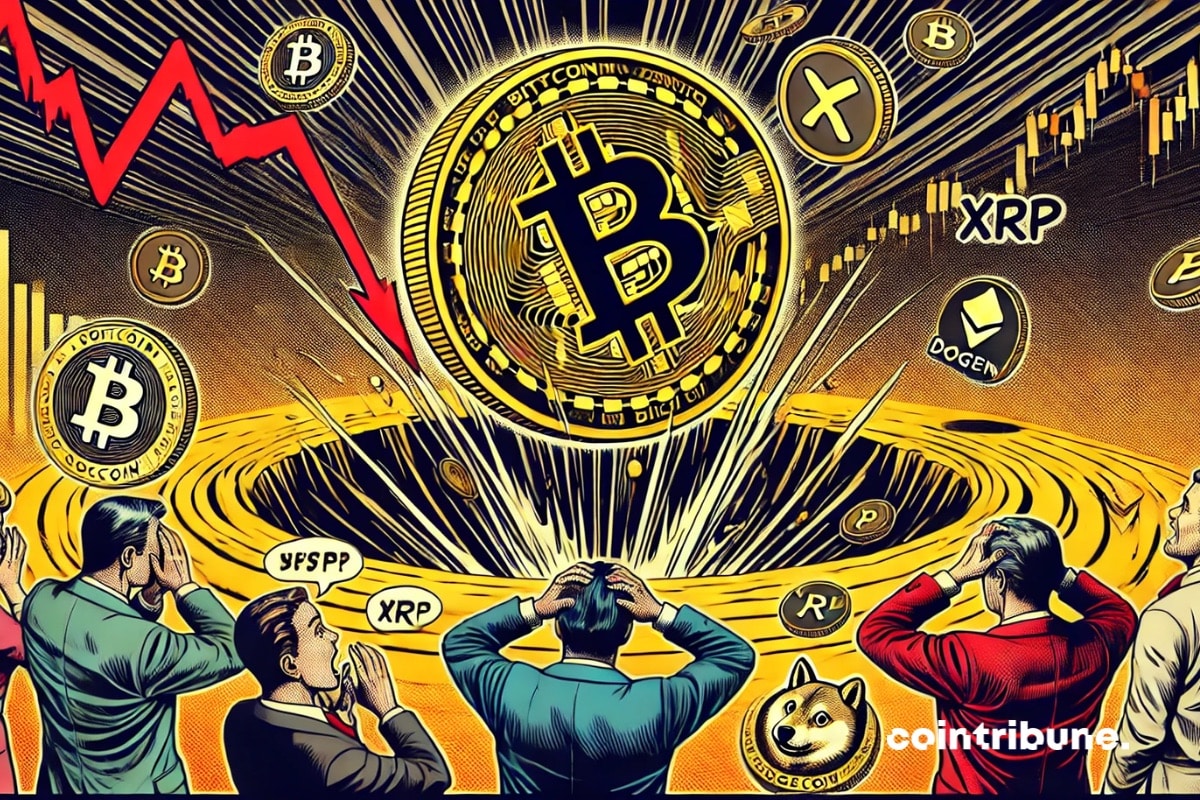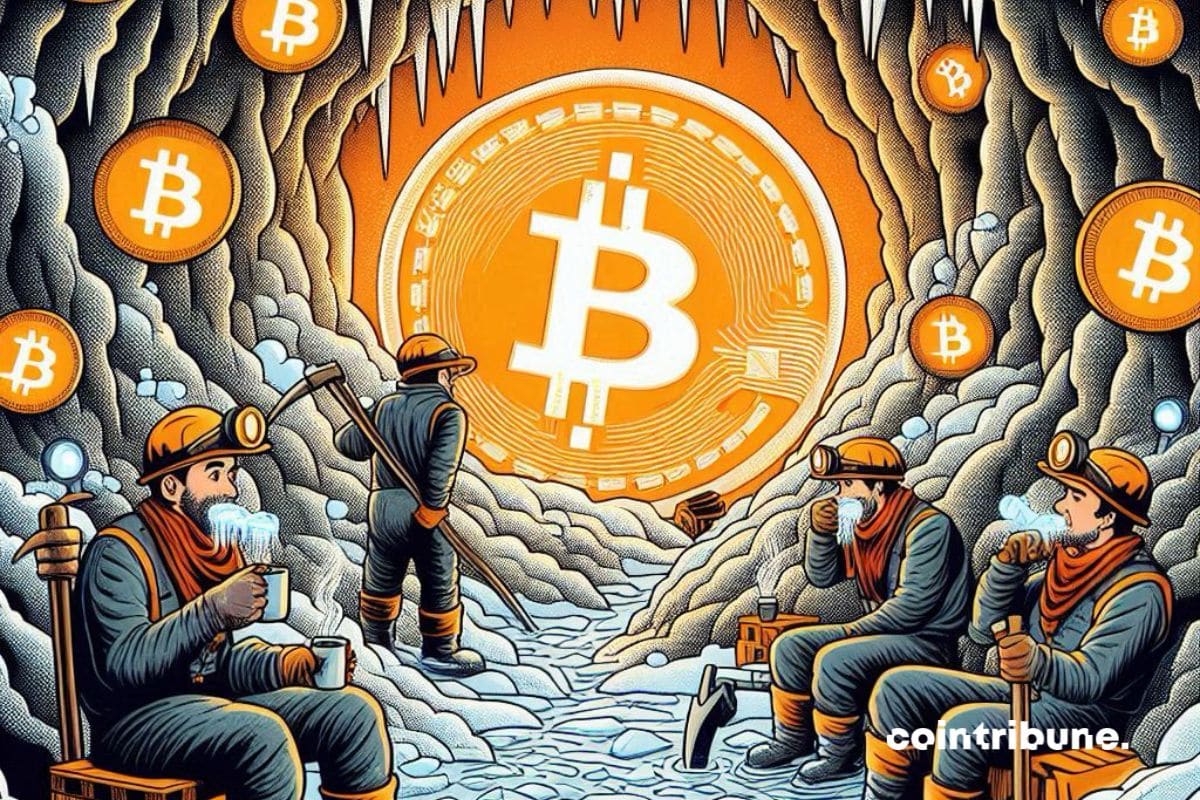Crypto traders are disoriented by a market that no longer reacts according to traditional patterns, despite an apparently favorable context with the pro-crypto initiatives of the U.S. government.
Crypto News
Solana (SOL), one of the leading cryptocurrencies in the market, is currently at a decisive crossroads. After reaching a peak of $220, the price began to decline, breaking through support levels at $215 and $212. Currently, SOL is trading below $205 and the 100-hour simple moving average, indicating persistent bearish pressure. But everything could soon swing!
A new threat looms over the crypto world. According to a recent analysis conducted by Kaspersky, a malware called "SparkCat" integrates into the software development kits (SDKs) used to create applications available on the Google Play Store and the Apple App Store. This malware is specifically designed to extract recovery phrases of crypto wallets from images stored on users' devices, thus jeopardizing the security of their funds.
Dogecoin (DOGE) is experiencing a period of instability. The memecoin is losing ground and is now below $0.30. This sharp decline revives uncertainty among investors as selling pressure increases. However, some analysts see it as merely a technical pullback, necessary before a new leap to unprecedented heights. Trader Tardigrade and DOGECAPITAL, influential figures in the market, believe that this correction fits into a larger bullish cycle, already observed in the past. In 2016 and 2021, Dogecoin experienced similar drops before soaring by 9,222% and 30,693%, respectively. If history repeats itself, DOGE could soon embark on a spectacular rise. But is this scenario really credible?
The growing adoption of inscriptions on Bitcoin could push the average block size to 4 megabytes (MB), according to a report published on February 4 by Mempool Research. This significant development occurs in a context where the debate over the use of the Bitcoin network echoes the old "block wars" that divided the community between 2015 and 2017.
The crypto market has just experienced a historic day, marked by a massive influx of capital into Ethereum. Indeed, the second largest cryptocurrency reached an all-time high of 38 billion dollars in daily trading volume, a threshold never crossed before. This spike in activity coincides with significant volatility in the price, which dropped to 2,152 dollars before rising back to 2,919 dollars. In an unexpected turn, Eric Trump, son of the American president, publicly expressed his optimism about investing in ETH. His statement comes as significant transfers of ETH to Coinbase have been observed, reinforcing speculation about growing institutional interest. This dual signal, between record volume and unforeseen political support, raises many questions about the market's evolution and the important role of Ethereum in the crypto ecosystem.
A key step has been taken in the regulation of the crypto market in the United States. Under the leadership of Mark Uyeda, acting chair, the Securities and Exchange Commission (SEC) has announced the creation of a Crypto Task Force, an entity responsible for providing more clarity to the rules governing cryptocurrencies. To structure its actions, the SEC has launched a dedicated website that offers companies and investors a space to submit their proposals and better understand regulatory requirements. This initiative comes as the crypto sector calls for clear guidelines and as the SEC faces off against the Commodity Futures Trading Commission (CFTC) over the issue of jurisdiction for cryptocurrencies. In addition to defining the boundary between securities and unregulated assets, this task force could shape the future of crypto ETFs and influence the oversight of trading platforms. However, its real impact will depend on its ability to establish a constructive dialogue with the industry, an approach that is still lacking in the SEC's current policy.
On February 4, 2025, David Sacks, recently appointed as the "Czar" of cryptocurrencies and artificial intelligence (AI) by the Trump administration, made a resounding announcement at a historic conference. Before an audience of investors, entrepreneurs, and regulators, he declared the end of the "persecution" of the crypto industry in the United States, a major turning point for the sector.
The Bitcoin network continues to surprise. While analysts expected a slowdown in hashrate after the April 2024 halving, the computing power mobilized by mining companies has just reached a historic record of 833 exahashes per second (EH/s), an increase of 9% in just a few days. This surge in power is explained by the massive investments made by mining companies, which anticipated the reduction in block rewards by strengthening their infrastructure. However, a surprising contrast emerges: despite a price hovering around 100,000 dollars, transaction fees are at historically low levels, which undermines the profitability of mining companies and raises questions about the economic balance of the network.
The medical technology company Semler Scientific (NASDAQ: SMLR) continues its aggressive investment strategy in bitcoin with the acquisition of an additional 871 BTC, bringing its total portfolio to 3,192 BTC. This transaction comes as the giant MicroStrategy takes a pause in its acquisitions.
The price of bitcoin has fallen below the $100,000 mark following China's announcement of new tariffs on American imports. This decision, which comes amid increasing trade tensions between the two powers, has caused a shockwave in the markets. Analysts fear a period of heightened volatility if Sino-American negotiations do not progress.
The cryptocurrency market is experiencing a new phase of instability, with XRP at the forefront. Within a few hours, its price saw a dramatic drop of 31%, before rebounding with a similar intensity. This extreme movement has created doubt among investors, torn between hope for a recovery and fear of a mere technical bounce. In this context, Bollinger Bands, a key technical indicator, are delivering mixed signals. If XRP manages to stabilize above its median threshold, a new bullish momentum could emerge. Conversely, a return to recent lows remains a credible hypothesis. This extreme volatility puts investors in a decisive position: to hold their positions betting on a recovery or to reduce their exposure to limit risks.
MicroStrategy, known for its massive commitment to bitcoin, surprised the markets by temporarily halting its BTC purchases. According to an announcement from Michael Saylor on February 3, 2025, the company has not acquired any bitcoin for a week already. This pause raises questions... strategy or is BTC just not interesting at the moment?
Shiba Inu is plunging, traders are panicking, and liquidations are pouring in. A crypto tragedy worthy of a soap opera, except this time, it's the wallet that is crying.
The crypto market is experiencing a spectacular rebound following the decision by U.S. President Donald Trump to temporarily suspend the proposed tariffs on Canada and Mexico. This announcement comes amid intense negotiations between the United States and its North American neighbors concerning border security and trade.
The crypto market is going through a period of instability, and Solana (SOL) is on the front lines. Since February 1st, the drop of Bitcoin below $100,000 has caused a shockwave across altcoins. Solana, whose price moves in strong correlation with BTC, has seen its price fall below the critical threshold of $200. The impact has not been limited to price declines: investors have massively reduced their exposure, leading to a withdrawal of $367 million from spot markets in three days. This massive liquidation has reversed market sentiment, as evidenced by a long/short ratio dropping to 0.93, confirming seller dominance. While technical indicators signal sustained bearish pressure, a break of current support levels could send Solana to new lows, unless a sudden surge in demand comes to reverse the trend.
As the crypto markets struggle under the shock of Trump’s tariffs, a new player enters the scene: David Sacks, the man who whispers to AI and digital assets. On February 4th, this shadow strategist will unveil Washington’s battle plan to regain control of a space in complete chaos. Between historical…
On February 3, 2025, Bitcoin reached a local low of $91,530 before rebounding to $95,306 later in the day. This decline comes after China, Canada, and Mexico promised severe retaliatory measures in response to tariffs imposed by the Trump administration. These measures have rekindled fears of a global trade war, prompting investors to shy away from risky assets, including cryptocurrencies.
The Crypto Fear and Greed Index has just reached 39, signaling a significant period of uncertainty in the markets. This indicator, ranging from 0 (extreme fear) to 100 (extreme greed), is an essential barometer of market sentiment. A value of 39 suggests some anxiety, but is it a sign of imminent panic or a strategic investment opportunity?
The crypto market is experiencing significant instability, and XRP is bearing the brunt of it. Indeed, the asset linked to Ripple has plunged by 25%, reaching an unprecedented low in several weeks. This brutal correction is not limited to XRP. Bitcoin has dropped by 6.35%, while Dogecoin has recorded nearly a 25% loss. This widespread pullback can be explained by an explosive cocktail of economic tensions and heightened speculative movements. The uncertainty surrounding traditional financial markets, particularly in the United States, fuels crypto volatility. In this context, one question remains: is XRP beginning a new descent, or is this a strategic low for opportunistic investors?
Bitcoin asserts its dominant position against altcoins. The queen of cryptos sees its market share cross the symbolic threshold of 60% on February 2, while altcoins suffer significant losses following the new trade measures imposed by President Trump.
India is currently reassessing its position regarding cryptocurrencies. Ajay Seth, the economic secretary of the Ministry of Finance, stated that India is closely monitoring international developments related to cryptocurrencies. The rise of these digital assets globally is prompting the country to reflect on its regulation and policy regarding crypto.
Bitcoin, freshly crowned with a peak of $102K, stumbles and dangerously flirts with $95K. A slight shiver or the beginning of a major downfall? Cryptocurrency trembles, and so do investors.
Ethereum (ETH) is drastically down to $3000, and despite that, some traders are still managing to profit from this downward trend. This is the case for a savvy investor, who has made nearly 16 million dollars in gains by betting against the crypto! So, is Ethereum more profitable during a downturn?
The stablecoin market has just crossed a historic milestone, reaching a market capitalization of over $200 billion. This rapid progression reflects a growing interest from investors in these dollar-backed assets, often perceived as a more stable alternative amidst the volatility of cryptocurrencies. While Tether (USDT) still dominates the market with $139.4 billion, the current dynamics indicate a rise of USDC, whose capitalization has more than doubled in three months. This shift in balance raises strategic questions: are we witnessing a mere redistribution of capital or a precursor signal of a major turning point for the crypto market?
Financial markets sometimes hold paradoxes. While Bitcoin is experiencing a new surge, surpassing the symbolic threshold of 100,000 dollars, one surprising element stands out: the absence of individual investors. After the Federal Open Market Committee (FOMC) meeting, the Bitcoin futures market witnessed a rapid rise, with an increase of 1.2 billion dollars in just 24 hours. However, instead of widespread enthusiasm, the data reveals a significant retreat of small investors, whose activity has dropped by 50% since November 2024. This phenomenon highlights a profound transformation in the market, where financial institutions are taking over from individuals. Should we see this as a mere cyclical adjustment or a lasting change in the evolution of Bitcoin?
The crypto market is currently undergoing a decline, significantly impacting major assets such as Bitcoin, XRP, and Dogecoin. This downward trend has raised concerns among investors and traders, who are now adopting a more cautious approach in light of the increased market volatility. Here are the reasons behind this drop!
Bitcoin has experienced a significant drop, falling below the symbolic mark of 100,000 dollars for the first time since January 27. This decline comes amid heightened trade tensions, following Donald Trump's announcement of new tariffs targeting China, Canada, and Mexico, prompting immediate reactions from these countries.
The intense cold wave in the United States has caused the first negative adjustment in Bitcoin mining difficulty since September 2024, according to mining company Luxor. In January, a powerful explosion in the Arctic dropped temperatures in the USA, increasing the demand for electricity and driving up energy prices. This situation forced many BTC miners to slow down their operations, resulting in a decrease in mining difficulty.
Uniswap, the leader of decentralized exchanges, is launching its version 4 on twelve major blockchains. This strategic evolution strengthens its position in an increasingly competitive DeFi market.















